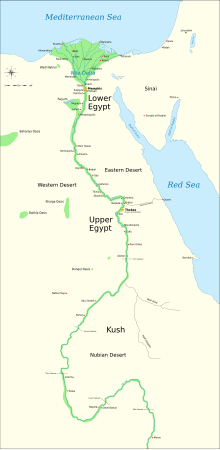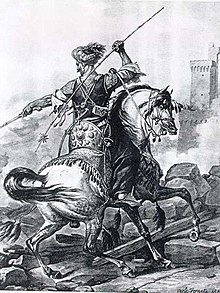User:Lamphereha/sandbox
 | This is a user sandbox of Lamphereha. You can use it for testing or practicing edits. This is not the sandbox where you should draft your assigned article for a dashboard.wikiedu.org course. To find the right sandbox for your assignment, visit your Dashboard course page and follow the Sandbox Draft link for your assigned article in the My Articles section. |
Suggested Edit (Sep 23rd, 2017)[edit]
[edit]First, there is no real brief overview to this article. I would suggest maybe adding a overview describing what you are going to talk about, listing the different time periods with a brief description of each instead of jumping right in to it. Second there is a few links that need to be updated as the pages they are linked to no longer exist. A few I noticed were Bakbak, Hasan al-Asam, and Karaksh. Next, I think more information needs to be added to the Mamluk Egypt section. I think a brief description of Mamluk Egypt overall should be added before jumping in and talking about its empires. In addition, I think some sections are to broadly covered, well other sections are not covered enough. I feel like the Fatimid period is to broadly covered, well the Abbasid period could have some more information added to it. MatthewGonz (talk) 23:22, 24 September 2017 (UTC)
Egypt in the Middle Ages
[edit]
Following the Islamic conquest in 639 AD, Lower Egypt was ruled at first by governors acting in the name of the Rashidun Caliphs and then the Ummayad Caliphs in Damascus, but in 747 the Ummayads were overthrown. Throughout the Islamic rule, Askar was named the capital and housed the ruling administration.[1] The conquest led to two separate provinces all under one ruler: Upper and Lower Egypt. These two very distinct regions would be heavily governed by the military and followed the demands handed down by the governor of Egypt and imposed by the heads of their communities.[1]
Egypt was ruled by various dynasties from the start of Islamic control in 639 AD and the end of it in the early 16th century. The Umayyad period lasted from 658 until 750. Next came the Abbasid period which focused on taxes and centralizing power. In 868 the Tulunids, ruled by Ahmad ibn Tulun, expanded Egypt's territory into the Levant. He would rule until his death in 884. After years of turmoil under Ahmad ibn Tulun's successor, many citizens defected back to the Abbasids and in 904 they would reclaim power from the Tulunids.[2] In 969 Egypt came under the control of the Western caliphate and the Fatimids. This dynasty would begin to fade after the death of their last caliph in 1171.
In 1174, Egypt came under the rule of Ayyubids. The Ayyubids ruled from Damascus, not the Fatimid city of Cairo. This dynasty fought against the Crusader States during the Fifth Crusade. Ayyubid caliph Najm al-Din recaptured Jerusalem in 1240. He introduced Mamluk forces into his army in order to hold off the crusaders. This decision would be one he regretted.
The Ayyubids were overthrown by their bodyguards, known as the Mamluks in 1252. The Mamluks ruled under the suzerainty of Abbasid Caliphs until 1517, when Egypt became part of the Ottoman Empire as Eyālet-i Mıṣr province.
The Mamluk Period
[edit]
The Mamluk's violent approach to power brought them great political and economic prosperity and to becoming the rulers of Egypt.[3] The Mamluk Egypt period began with the Bahri Dynasty and be followed by the Burji Dynasty. The Bahri Dynasty would rule from 1250 to 1382, while the Burji dynasty would last from 1382 to 1517. [3]
Cultural contributions of the Mamluk empire span across more than the religion. Literature and astronomy were two subjects which the Mamluks valued and participated in heavily.[4] They were a highly literate and educated society. Private libraries were a status symbol in Mamluk culture. Some of the libraries discovered show evidence the remnants of thousands of books; the sum of that many books would have cost a large amount of a household's income.
The end of the Mamluk period was brought about due to things such as famine, military tensions, disease, and high taxation.
Bahri dynasty[edit]
[edit]Main article: Bahri dynasty Bahri Mamluks at its greatest extent. Blue indicates the Ilkhanates. The Mamluk sultans were drawn from the enfranchised slaves who formed the court and officered the army. The sultans were unable to effectively form a new dynasty, usually leaving behind infants who were then overthrown. The Bahri dynasty would go through 25 sultans in its 132 year period.[5] Many died or were killed shortly after being but in power; very few lived more than a few years into their rule as sultan. The first of these was Aybak, who married Shajar al-Durr (the widow of al-Salih Ayyub) and quickly began a war with Syria. He was assassinated in 1257 and was succeeded by Qutuz, who faced a growing danger from the Mongols.
Qutuz defeated the army of Hulagu Khan at the Battle of Ain Jalut in 1260, allowing him to regain all of Syria except Crusader strongholds. On the way back to Egypt after the battle, Qutuz died and was succeeded by another commander, Baybars, who assumed the Sultanate and ruled from 1260 to 1277. In 1291 al-Ashraf Khalil captured Acre, the last of the crusader cities.
The Bahris greatly enhanced the power and prestige of Egypt, building Cairo from a small town into one of the foremost cities in the world. Due to the sacking of Baghdad by the Mongols, Cairo became the central city of the Islamic world. The Mamluks built much of the earliest remaining architecture of Cairo, including many mosques built out of stone using long, imposing lines.
Since 1347 the Egyptian population, economy, and political system experienced significant destruction as a result of the Black Deathpandemic whose waves continued to destroy Egypt up to the early 16th century.

In 1377 a revolt in Syria spread to Egypt, and the government was taken over by the Circassians Berekeh and Barkuk. Barkuk was proclaimed sultan in 1382, ending the Bahri dynasty. He was expelled in 1389, but recaptured Cairo in 1390, setting up the Burji dynasty.
Burji dynasty[edit]
[edit]Main article: Burji dynasty
The Burji dynasty (1382–1517) proved especially turbulent, with political power-plays designating short-lived sultans. During the Burji dynasty, the Mamluks fought Timur Lenk and conquered Cyprus.
The plague epidemics continued to destroy Egypt during this period; they attacked this country in 1388–1389, 1397–1398, 1403–1407, 1410–1411, 1415–1419, 1429–1430, 1438–1439, 1444–1449, 1455, 1459–1460, 1468–1469, 1476–1477, 1492, 1498, 1504–1505 and 1513–1514.
Constant bickering contributed to the inability to resist the Ottomans.
The Ottoman Sultan Selim I defeated the Mamluks and captured Cairo on January 20, 1517, transferring the center of power to Istanbul. However, the Ottoman Empire retained the Mamluks as the Egyptian ruling class. The Mamluks and the Burji family regained much of their influence, but technically remained vassals of the Ottomans.

Sources
[edit]The Mamluks in Egyptian Politics and Society edited by Thomas Philipp, Ulrich Haarmann
The Wisdom of Egypt: Changing Visions Through the Ages edited by Peter J Ucko, Timothy Champion
A history of Egypt in the Middle Agesby Stanley Lane-Poole
Framing the Early Middle Ages : Europe and the Mediterranean, 400-800 Chris Wickham
- ^ a b War and society in the eastern Mediterranean, 7th-15th centuries. Lev, Yaacov. Leiden: New York. 1997. ISBN 9004100326. OCLC 34515063.
{{cite book}}: CS1 maint: others (link) - ^ N.), Kennedy, Hugh (Hugh (2004). The Prophet and the age of the Caliphates : the Islamic Near East from the sixth to the eleventh century (2nd ed ed.). Harlow, England: Pearson/Longman. ISBN 0582405254. OCLC 55792252.
{{cite book}}:|edition=has extra text (help)CS1 maint: multiple names: authors list (link) - ^ a b Hanna, Nelly (2008). The Mamluks in Egyptian Politics and Society. Philipp, Thomas., Haarmann, Ulrich. Cambridge Univ Pr. p. 197. ISBN 9780521033060. OCLC 144525826.
- ^ Hanna, Nelly (2008). The Mamluks in Egyptian Politics and Society. Philipp, Thomas., Haarmann, Ulrich. Cambridge Univ Pr. p. 200. ISBN 9780521033060. OCLC 144525826.
- ^ Lane-Poole, Stanley (1901). A History of Egypt in the Middle Ages. Cambridge, Massachusetts: Methuen. p. 254.
TO DO LIST:
[edit]find sources
find photos
cite introduction
rewrite the Mamluk section
edit the citation section
add a culture section or edit/add to another linked article
